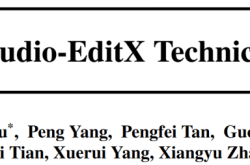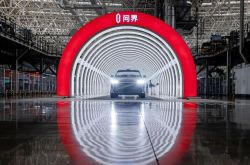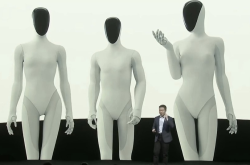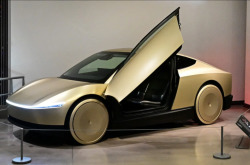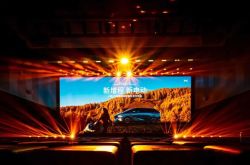Automakers Rush into "Humanoid Robotics": Is It Just about Shared Technologies?
![]() 12/30 2024
12/30 2024
![]() 450
450
Are automotive media outlets now delving into robotics? It's because automakers are making a beeline into the robot industry.

With global automakers flooding into the robot industry, XPeng, BYD, Changan, GAC, Tesla, and Toyota have collectively entered the scene, focusing on humanoid robots.
As AI and mechanical technologies mature, it's natural for companies to enter the robot industry. Many domestic and foreign firms, including Dakuo, Unitree Robotics, BlueCore Technology in China, and Boston Dynamics in the US, ABB in Switzerland, Kuka in Germany, and Yaskawa in Japan, have already ventured into this field. The intriguing question is why so many automakers are crossing over.
Some media outlets suggest that automakers have advantages in independent R&D systems and market sales experience. However, these explanations are overly general; they could imply automakers could enter any field. To understand the influx of automakers into humanoid robotics, we must consider factors like technological commonalities and market prospects.
The fundamental reason lies in the shared technology between robots and automobiles.
In 1950, British computer scientist Alan Turing introduced the concept of embodied intelligence, referring to AI with numerous sensors that interact with the environment, make decisions based on collected data, and adapt over time. When one thinks of this concept, a robot often comes to mind.
This is indeed the case, but embodied intelligence emphasizes perception, learning, and adaptation, while robots focus on task completion based on user needs. Among the devices we commonly see today, what has the most sensors? That's right, it's automobiles. High-level autonomous driving models are equipped with multiple cameras, ultrasonic radars, and millimeter-wave radars, and some high-end models even have LiDAR.

(Image source: AI generated)
Both autonomous driving and robots require strong environmental recognition capabilities. They evolve towards understanding the real world, with technological interoperability. Li Xiang, CEO of NIO, bluntly stated at the AI Talk that if L4 autonomous driving cannot be implemented well, the capabilities of resulting robots will also be limited.
Robots need both "linguistic intelligence" and "spatial intelligence" to understand the real world and complete tasks based on user instructions. For automakers, spatial intelligence, crucial for autonomous driving, is a necessary research direction. Additionally, to enhance the user experience of intelligent cockpits, linguistic intelligence, part of large language models, cannot be overlooked. Possessing both linguistic and spatial intelligence is a hard requirement for industry and consumers.
In terms of market prospects, humanoid robots have immense potential. Tesla CEO Elon Musk predicts that the demand for humanoid robots will surpass that for Tesla cars in the future, with the number of humanoid robots on Earth potentially exceeding humans by 2040. During a speech at the Hong Kong University of Science and Technology, NVIDIA CEO Jen-Hsun Huang also stated that only autonomous vehicles, drones, and humanoid robots are expected to be mass-produced in the future.
In various science fiction works, creators envision the many conveniences future robots may bring. Perhaps soon, we can entrust disliked daily chores to robots, freeing time for artistic pursuits rather than being bogged down by work and household tasks while AI handles painting, video generation, and music creation.

(Image source: AI generated)
The automobile and robot industries both require linguistic and spatial intelligence, with significant technological interoperability. It can be argued that L4 autonomous driving is, to some extent, a precursor technology for humanoid robots. Coupled with promising industry prospects, it's no surprise that domestic and foreign automakers are venturing into this field. Moreover, as the global automotive industry progresses towards the new energy era, automakers, deeply affected by industry changes, naturally pay more attention to the emerging humanoid robot industry.
Especially Tesla and domestic new energy vehicle brands, which rose to prominence when overseas giants dominated the industry, are unwilling to miss new opportunities in the broader robot industry. If successful, brands like NIO and XPeng could leap from "leaders of new energy vehicle brands" to "global technology giants."
Is at least 50 billion yuan required to qualify for "creating humans"?
At XPeng's AI Technology Day on November 6, 2024, He Xiaopeng stated that creating AI robots is more difficult than making cars, requiring higher integration and at least 50 billion yuan. This statement might be slightly exaggerated but isn't baseless.
In TechRadar's experience, whether it's GPT-4 or AI large models like Doubao, Kimi, ERNIE Bot, etc., there are issues with accurately understanding human natural language, which is crucial for humanoid robots to interact freely with users.
In terms of spatial intelligence, autonomous vehicles' performance is also unsatisfactory. For example, acceleration, deceleration, and lane changes can be abrupt. When there's a traffic jam ahead, a human driver might start slowing down early, while an AI might brake suddenly when close. Autonomous vehicles sometimes follow too closely, braking sharply only when the vehicle in front brakes suddenly, rather than making proactive judgments based on road conditions. These situations might relate to sensor detection ranges but also expose spatial intelligence limitations and perception issues.

(Image source: AI generated)
Furthermore, humanoid robots' practicality is closely tied to joint flexibility. Each joint may require a motor and be powered by a battery, demanding high motor, battery, and control technologies. Currently, humanoid robots still struggle to run, jump, grasp, and use tools smoothly in complex environments like humans. In terms of battery life, Unitree Robotics' humanoid robot Unitree G1, equipped with a 9000mAh battery, lasts only 2-3 hours.
For humanoid robots to become popular, usability and affordability are prerequisites. Only by being affordable do humanoid robots have the potential for widespread adoption. However, at this stage, hardware components like motors, sensors, and computing power chips are costly.
Unitree Robotics' humanoid robot Unitree G1 costs 99,000 yuan, and Zhongqing Robotics' humanoid robot PM01 costs 88,000 yuan, unacceptable to most consumers. This is based on China's industrial strength, controlling the price within 100,000 yuan. Industry insiders reveal that Boston Dynamics' unannounced humanoid robot Atlas is estimated to cost around one million yuan.

(Image source: Unitree Robotics)
The key to solving these issues lies in increased investment in technological R&D and rapid mass production. Costs can be reduced through technological iterations and large-scale mass production. But as He Xiaopeng noted, the robot industry is extremely costly. Zhang Xiang, a visiting professor at Huanghe Science and Technology College, stated that the humanoid robot industry is still in its nascent stage, with an immature industrial chain. Before mass production, investing in the humanoid robot industry will be extremely expensive.
Perhaps realizing industry risks, Li Xiang, while stating that NIO will develop humanoid robots, also noted they wouldn't immediately enter the market, prioritizing L4 autonomous driving research.
Is focusing on the B-end market a wise move for automakers to "create humans"?
Looking back at the new energy vehicle industry's development, countless brands have collapsed. Brands like Byton, which burned through 7 billion yuan, Geely-Baidu's Jiyue, Evergrande's Evergrande Auto, and Qiantu Motor, hailed as the "Chinese McLaren," still have some recognition. Many more, like Enovate Motors, Singulato Motors, and Lvchi Automobile, have silently faded away.
The same applies to the humanoid robot industry. Most entrants will falter, with only a few finding the right direction or having substantial finances persevering until the industry's rapid development period.
TechRadar believes that established automakers like BYD, Changan, GAC, and Toyota, or profitable new energy vehicle brands like NIO and Thalys, can consider investing in humanoid robots or other emerging industries if they have the capacity after deducting shareholder dividends, expansion costs, and R&D investments. Declining automakers and unprofitable new energy vehicle brands need to be more cautious to prevent fund chain ruptures from excessive investment.
Regarding robot functions, TechRadar suggests that the C-end market shouldn't be the primary target initially. C-end environments and uses are complex, with diverse user needs, making it hard for product functions to fully meet them.

(Image source: AI generated)
B-end scenarios are relatively homogeneous, with simpler functional and design requirements for robots. Humanoid robots like XPeng Iron and Tesla Optimus have been used and tested in automobile production workshops. They can replace human employees in dangerous tasks, and considering wages, the cost of using robots might not significantly increase.
Although the humanoid robot industry is in its nascent stage, AI and autonomous driving advancements have laid a foundation, potentially enabling faster development than the new energy vehicle industry. However, TechRadar doubts Musk's prediction that the number of humanoid robots worldwide will surpass humans by 2040. The humanoid robot industry still faces many technological hurdles, and reducing costs and prices to expand the market is a long and arduous task.
The road to success is paved with failures. On the humanoid robot industry's development path, many companies will inevitably fail. However, their exploration helps others eliminate wrong paths, enabling a few to succeed. The new energy vehicle industry is a testament to this.
For decades, domestic automakers largely lagged behind, but with the new energy vehicle era, domestic automakers have achieved overtaking. Established automakers transitioning to new energy and tenacious new energy vehicle brands all have the courage to strive. With unremitting efforts, Chinese companies' technological strength and product competitiveness in the humanoid robot era will surely lead the world.

